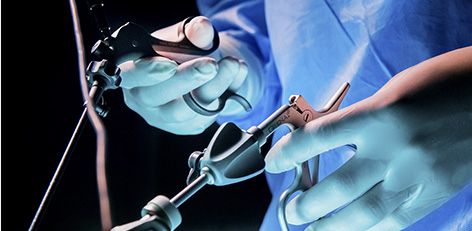Brachytherapy is a technique of external beam radiotherapy. Currently, two types of this therapy are used:
- HDR brachytherapy ("high dose rate", using radioactive isotopes of high dose radiation power), in which a radioactive isotope is delivered into the prostate for a short time.
- brachytherapy with permanent radioactive implant insertion (LDR) into a tumour in the prostate.
The first type of this therapy is available in Polish medical centres. The procedure is performed in an operating theatre and takes from 1.5 to 3 hours. During the procedure, the patient is under subdural or general anaesthesia. During the procedure the patient lies on his back and has a catheter inserted. A transrectal ultrasound scan is performed before the procedure to evaluate the size and the size of the gland. A stabilising plate is placed on a perineum skin to immobilise applicators (needles) with a radiation source, for their correct implanting. After one day at a hospital, the patient can return home.
Delayed complications rate after brachytherapy:
- complications from the genitourinary system affect 4.3% of patients;
- gastrointestinal complications affect 1.7% of patients;
- urethral stricture - 3.4% of patients
- urinary incontinence - 0.8% of patients
- problems with urination - 0.8% of men
- rectal bleeding - 1.7% of patients.
See also

Laparoscopic Radical Prostatectomy
The aim of the LRP therapy is to prevent further development of the disease through prostate resection.

Da Vinci method – prostate cancer treatment
The goal of da Vinci method is completely curing the patient and preventing the spread of the disease through metastasis.

Salvage lymphadenectomy
Lymphadenectomy is a medical procedure performed during prostatectomy or as a form of salvage therapy if lymph node cancer recurrence is detected after primary treatment.
